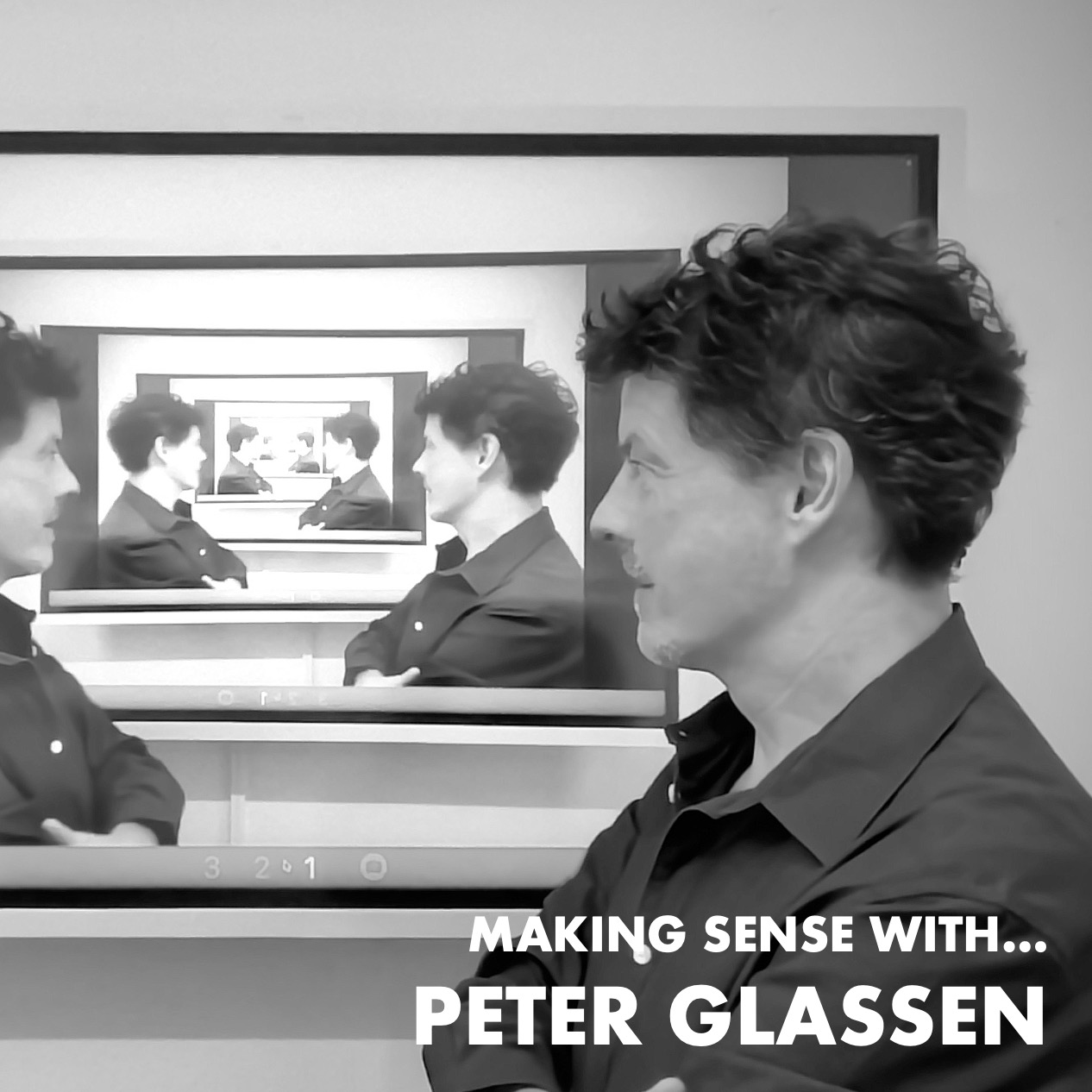Photo courtesy of Peter Glassen
What makes a semiotician tick? SEMIOVOX’s Josh Glenn has invited his fellow practitioners in the field of commercial semiotics, from around the world, to answer a few revealing questions.
Bern (Switzerland)…
SEMIOVOX
When you were a child/teen, how did your future fascination with symbols, cultural patterns, interpreting “texts,” and getting beneath the surface of daily life manifest itself?
PETER GLASSEN
I grew up in the former East Germany (GDR), where reading between the lines was vital for people who were critical of the system. From my parents and my grandmother, I learned early on to pay attention and not only to perceive the obvious, but also to recognize what was hidden — be it in conversations, gestures, or political symbols. These lessons left a lasting impression on me and awakened my fascination and awareness of what lies hidden behind the visible surface of things.
SEMIOVOX
Describe your first encounter(s) with the theory and practice of semiotics.
PETER GLASSEN
I first came into contact with the theory of semiotics during my studies at university in Berlin. At first, I hardly understood anything! But I instinctively sensed that behind the theories and models lay a fascinating and new approach to the world. Step by step, this world opened up to me. Today, I teach students the basics of semiotics myself. I am happy when this exciting subject also opens a window to this world for them.
SEMIOVOX
How did you find your own way to doing semiotics?
PETER GLASSEN
I have been working in brand consulting for almost 35 years. Applied semiotics was initially an unconscious, later conscious part of my methods. Today, I analyze my clients’ brand identities, sharpen the brand essence, and optimize branding internally and externally.
SEMIOVOX
What are the most important attributes of a good semiotician?
PETER GLASSEN
Close listening, precise observation, sensitive perception, curiosity, and openness to the visible and invisible facets of culture are the most important attributes of a good semiotician. And, of course, methodical expertise and respect for the diversity of culture(s).
SEMIOVOX
What three books about semiotics have you found the most useful and enlightening in your own work?
PETER GLASSEN
- Mythologies by Roland Barthes impressed me with its precise explanations of everyday myths and its fascination with the workings of communication.
- Il Segno (The Sign) by Umberto Eco offers a good overview of the history of a philosophical concept and of various schools of thought.
- Visual Semiotics by Wolfgang Wildgen deals with visual signs from cave painting to the present day — and their development.
SEMIOVOX
When someone asks you to describe what you do, what is your “elevator pitch”? How do you persuade a skeptical client to take a chance on using this tool?
PETER GLASSEN
When someone asks me about my job, I answer: “I carry out identity and cultural analyses for brands and companies.” It’s a bit like “Don’t mention the war!” — Don’t mention semiotics! Why should you? It’s the result that counts! However, anyone who would like to find out more about the method is welcome to do so.
SEMIOVOX
What specific sorts of semiotics-driven projects do you find to be the most enjoyable and rewarding?
PETER GLASSEN
The projects that I find enjoyable and fulfilling vary depending on the specific nature of the project itself as well as the chemistry with the client. It is particularly touching for me when my clients have gained a deeper understanding of their service, product, or company at the end of the project and can identify with it. Because only those who understand the cultural pattern of their brand can communicate authentically with others. Applied semiotics is one of the keys.
SEMIOVOX
What frustrates you about how semiotics is practiced and/or perceived, right now?
PETER GLASSEN
Conferences like Semiofest are an inspiring place to connect the world’s semioticians and to disseminate their methods and experiences. Nevertheless, in Switzerland, the home country of Ferdinand de Saussure, applied semiotics has hardly been represented until now. That’s why we founded the first Swiss network for applied semiotics, SEMIOTICS.CH, together with colleagues. Since 2021, we have been offering cultural analyses from a national (DACH) and international perspective.
SEMIOVOX
Peirce or Saussure?
PETER GLASSEN
Saussure, because I am interested in the cultural-scientific analysis of structures and systems — and because his work was applied by Roland Barthes to visual phenomena of culture. (But I can’t imagine semiotics without Peirce, either).
SEMIOVOX
What advice would you give to a young person interested in this sort of work?
PETER GLASSEN
Be open, curious, and trust your intuition.
MAKING SENSE series: MARTHA ARANGO (Sweden) | MACIEJ BIEDZIŃSKI (Poland) | BECKS COLLINS (England) | WHITNEY DUNLAP-FOWLER (USA) | IVÁN ISLAS (Mexico) | WILLIAM LIU (China) | SÓNIA MARQUES (Portugal) | CHIRAG MEDIRATTA (India / Canada) | SERDAR PAKTIN (Turkey / England) | MARIA PAPANTHYMOU (Greece / Russia) | XIMENA TOBI (Argentina) | & many more.
Also see these series: COVID CODES | SEMIO OBJECTS | MAKING SENSE | COLOR CODEX


